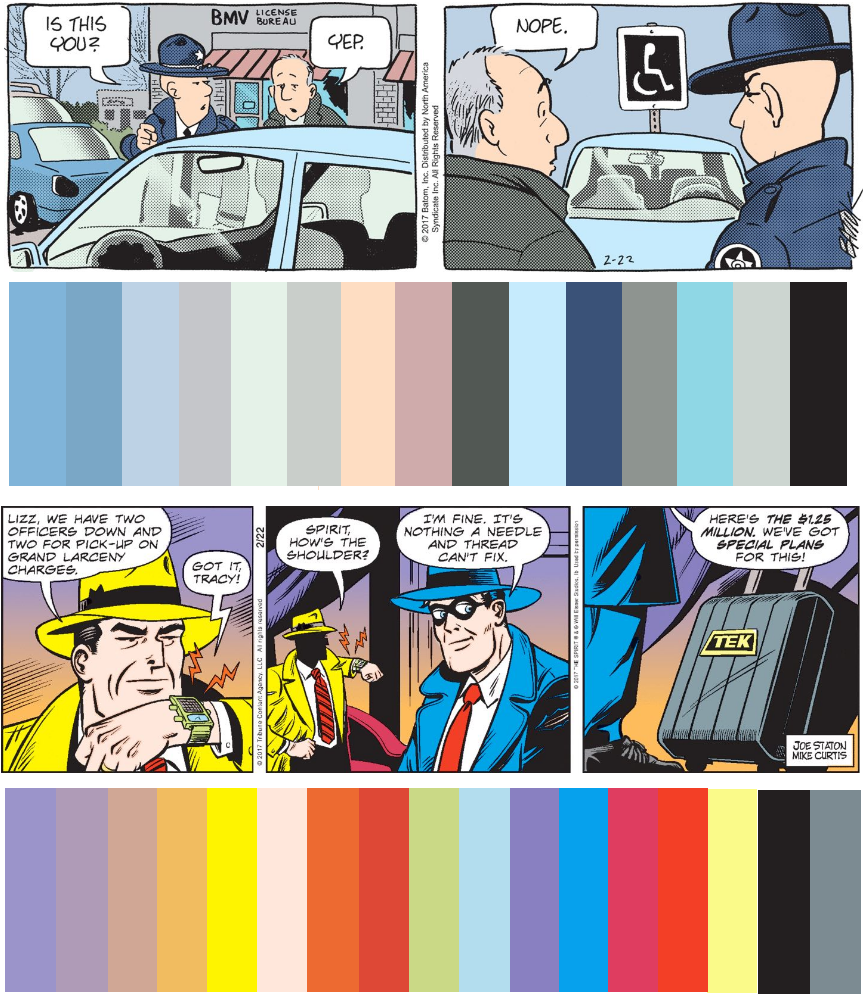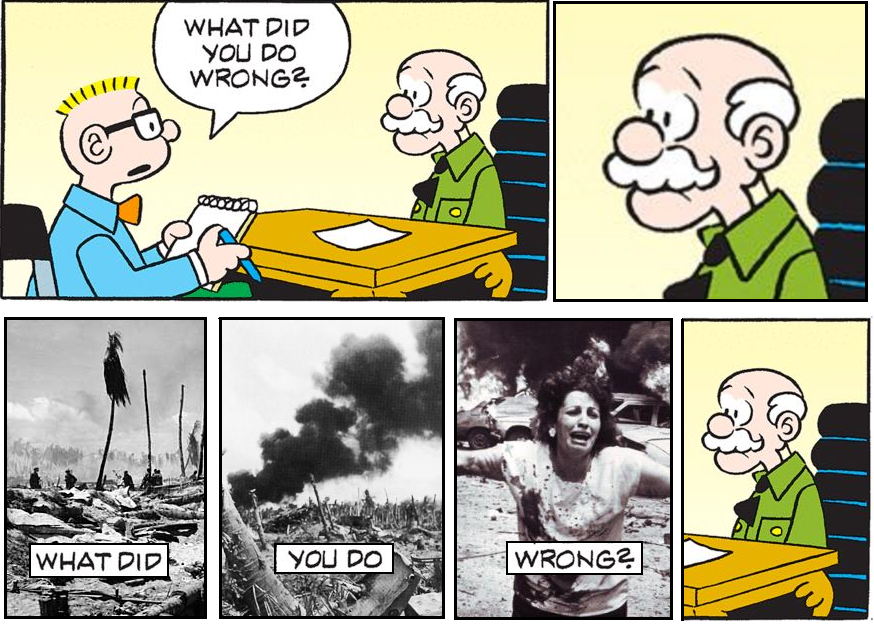 |
| Color charts for Funky Winkerbean and Dick Tracy. |
 |
| How comics used to look. |
Meanwhile, print media has been all but entirely usurped by the internet, where color presents no added expenses or technical headaches. And since I now read comics online rather than in print, I've become used to seeing daily strips in color. But there is still a schism between weekdays and weekends. On Sundays, the artists themselves color their own strips. From Monday through Saturday, that chore is farmed out to subordinates hired by the syndicates. Comics blogger Josh Fruhlinger refers to these mysterious workers as "coloring drones."
As one might guess, these drones are hit-and-miss in their duties. Most days, they just go through the motions. Comic strips tend to be very repetitive, using the same characters, settings, and scenarios over and over again. It's not uncommon for the characters in these strips to wear the same outfits every day for decades. It gets to be very routine. But occasionally, a coloring drone will do something that stands out. Normally, this means making some boneheaded mistake, like accidentally giving a character blue skin or something. Or maybe it means that a drone put in some extra effort on a strip, e.g. depicting autumn leaves in various shades of red, gold, and brown.
At the top of this post, you'll see two contrasting strips, both of which ran today: Funky Winkerbean and Dick Tracy. You can see at a glance how wildly different these two strips are. Funky is a serialized comedy-drama about depressed, dilapidated, aging adults. It's supposed to be realistic and relatable. The title character, for instance, has spent the past few days at the Bureau of Motor Vehicles. Notice how drab the colors are: so many shades of blue, gray, and blueish-gray. Dick Tracy, on the other hand, is a highly stylized crime/action strip about a violent, trenchcoat-wearing detective who hasn't changed much since the 1940s. He's currently wrapping up a (ridiculous) case that teamed him up with The Spirit, another throwback crimefighter. The riotous color scheme tells you all you need to know about the over-the-top sensibility of this strip.
Just for further elucidation of this topic, here's a breakdown of today's Garfield. You'll notice that the palette is more limited than either Dick Tracy or Funky Winkerbean. This long-running strip goes for broad, obvious jokes, and that dedication to simplicity extends to its color choices.
 |
| Yeah, Garfield only has about six colors. |














